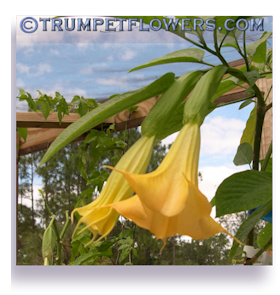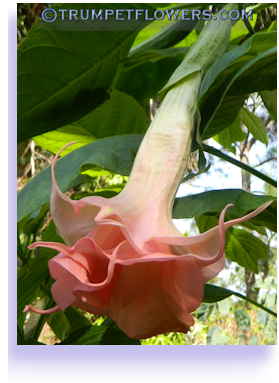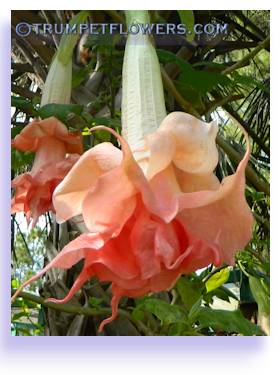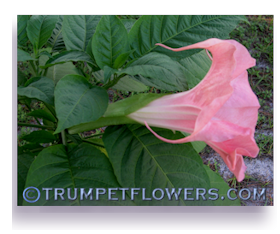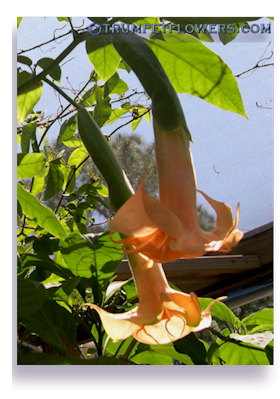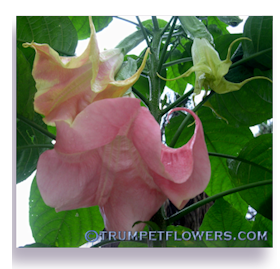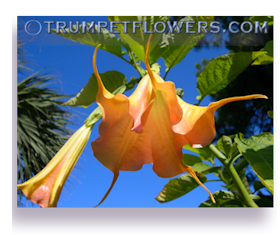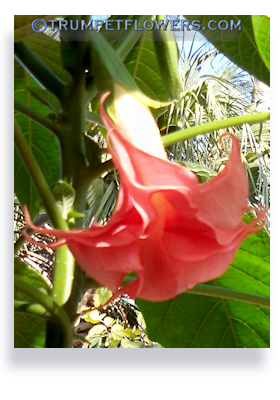Stop Garden Pests
Organically
Organic Pest Control
Organic Gardeners are truly 'a different animal,' when it comes to gardening. Organic gardening, unlike retro-gardening, entails the ideal of allowing for other forms of mother nature to survive, as opposed to wiping out everything that is not your chosen plant.
In an organic garden, frogs, toads and beneficial insects are sought after. A stray weed here and there does not end the world,and chemicals are unheard of. Biological controls are used instead, which helps to stabilize the wildlife in any one area, makingdiversification of life more balanced between the plants and the animals. And you help make it all happen.
Organic gardeners reap the benefits of knowing that they and their family are eating healthy, nutritious, and non∼poisoned foods. Organic gardeners I've met also don't seem to stress as much as those intent upon killing every bug from here to Timbuktoo, afraid that any one small insect can wipe out all their hard work. An organic gardener will give up a fruit or two, and save the rest of the bounty by fighting back with organic means.
First Things First
Preparing the area where you intend to set up your garden should be well planned in advance. The further ahead of time you know where the future garden will be, the better you can prepare the area for the plants that will bedded there.
Beneficial Garden Insects
Make Pests a Thing of the Past
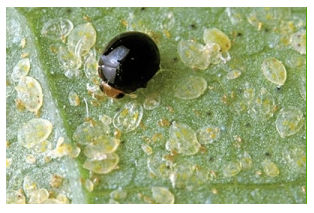 Can you list the five worst pest problems in your garden? If those problems are the same year after year, it's a sign that you need to change your gardening style. You don't have to tolerate the same pesky insects every year, wreaking havoc on your well laid plans. Changing to organic gardening is effective if you just make a few changes to your mindset when it comes to pest control. It's also healthier, not only for you and your family, but for the environment too.
Can you list the five worst pest problems in your garden? If those problems are the same year after year, it's a sign that you need to change your gardening style. You don't have to tolerate the same pesky insects every year, wreaking havoc on your well laid plans. Changing to organic gardening is effective if you just make a few changes to your mindset when it comes to pest control. It's also healthier, not only for you and your family, but for the environment too.
Good Practices
You will find that healthy plants tend to have the best resistance against pests. Plants that are watered properly, have their feet in fertile, loamy soil and receive the proper amount of nutrients and lighting also have the best chance of standing up against an onslaught of insects and disease. Make sure that your plants never stress between waterings, and that they do receive micronutrients and organic fertilizer. Protect them from high winds that could potentially burn their leaves or break fragile stems, leaving wounds for fungus or disease to enter.
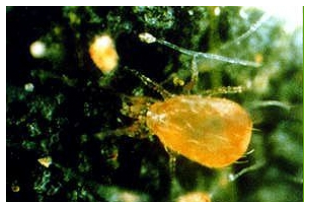 Here's an example. Blossom end rot can esentially be wiped out in tomatoes, by watering properly. It is caused by a calcium deficiency, that is linked to water stress.
Here's an example. Blossom end rot can esentially be wiped out in tomatoes, by watering properly. It is caused by a calcium deficiency, that is linked to water stress.
Photo to right shows The predatory mite occidentalis consumes the dreaded spidermites that are a scourge to our brugmansia and other plants, including vegetable crops.
Choose Resistant Plants
Begin by reading through the seed catalogs or going online and learning which plants are disease and pest resistant before you purchase them. When choosing vegetable and fruit cultivars, make sure to look up what those special symbols next to them stand for. Many are resistant to fusarium wilt, as well as other diseases and pests.
Leaf Miners can be controlled through the use of Spinosad, an organic oorganism that does help control them and their larvae. Spinosad has been around for decades of use in this manner.
Crop Rotation
When growing vegetable or grain crops, this is a very important factor when you are going around the second and third time with a garden. Make sure you make a plan on paper, and plant particular cultivars in theplots you've marked on that plan. Next year, be sure to move them to different locations. This stops diseases, fungi and pests from becoming familiar with their favorite plants, and helps wipe out these nasties. Even in raised bed gardening, you should rotate your crops. As an example, never plant tomatoes in the same place that peppers or potatoes were placed. (for at least 3 years) As these three plants are all from the family solancae, (so are brugmansia) they will share many of the same disease characteristics. Instead, plant peas where you had the peppers. Peas are legumes, and set nitrogen in the soil. This is loved by the solancae family of plants.
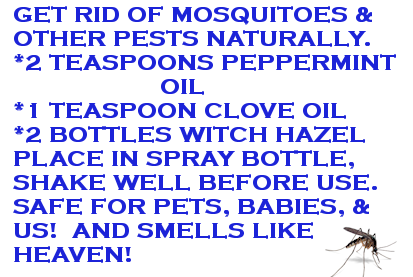
Timing the Plantings
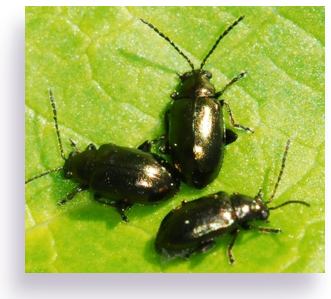 Since I live in zone 10A, I am able to garden a bit more freely than some of you. However, using cloches and other covered methods can have you starting out your vegetables and berry crops before the other gardeners in your area, giving you a bumper crop while they are still waiting for flowers. This can also help you beat pests that are timed to arrive when they expect the veggies to be blooming; now your neighbor's plants.
Since I live in zone 10A, I am able to garden a bit more freely than some of you. However, using cloches and other covered methods can have you starting out your vegetables and berry crops before the other gardeners in your area, giving you a bumper crop while they are still waiting for flowers. This can also help you beat pests that are timed to arrive when they expect the veggies to be blooming; now your neighbor's plants.
Putting yours out before the pest infestation is expected gives you extra time to escape their rampage. You can also choose to plant after the major invasion is over, giving you a second crop. Just start them in protected areas, or indoors, or under cloches or coldframes. I personally use screening to keep the insects off of my plants, and it works. An occasional small insect may get through, but things like cutworms, grasshoppers and hornworms will never even get a whiff of them.
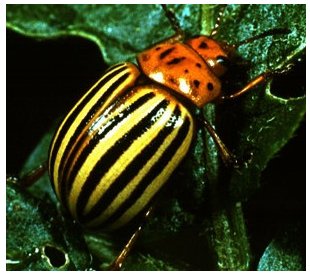 Learn the pests that are in your area. Learn their life cycles so that you'll be able to protect the flowers and fruits from them (through timing).
Learn the pests that are in your area. Learn their life cycles so that you'll be able to protect the flowers and fruits from them (through timing).
Size It All Up
If you know which pests are the most aggressive in your area, you'll be better prepared to battle them later. Look through your old gardening records from year's past, see what pests were problems to you and what you used to fight back. If you are new to an area, ask your local county extension office for local pest information.
Always make a habit of inspecting closely your plants. Look under leaves, the stems, and the bases. Make sure the plant is the same color as the others of the cultivar. If it is not, it is most likely sick. Examine closely new growth. This is where many pests like to suck on the new, sweet sap of the tender plant. Use a strong spray of water to remove small sucking aphids. Use insecticidial soap for more aggressive pests.
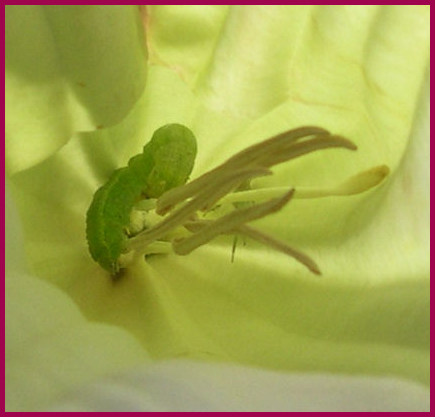
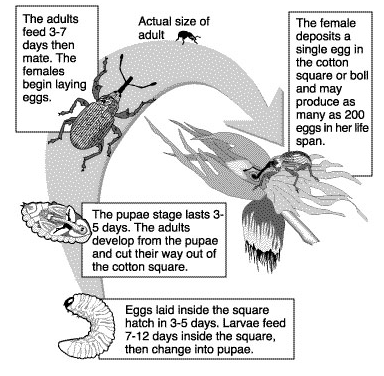 Weevils are a hard shelled variety of insect that I most often find on my bauhinia and cassia. In South Florida, the species I find on them is the silvery bluish one pictured. They will also attack your brugmansia and other solanaceae cultivars, such as tomato and pepper plants. Since they are hard shelled, The adults hide underneath the leaves. Bend down to see them. Then pick them off by hand and pinch them in half with your fingernails. Careful when disturbing the leaf, their defense is to drop. Since they have a very hard shell, poisons are few and far between that are able to penetrate that shell and kill them, so I find hand picking them the best. If you check your plants daily, you should be able to keep them under control.
Weevils are a hard shelled variety of insect that I most often find on my bauhinia and cassia. In South Florida, the species I find on them is the silvery bluish one pictured. They will also attack your brugmansia and other solanaceae cultivars, such as tomato and pepper plants. Since they are hard shelled, The adults hide underneath the leaves. Bend down to see them. Then pick them off by hand and pinch them in half with your fingernails. Careful when disturbing the leaf, their defense is to drop. Since they have a very hard shell, poisons are few and far between that are able to penetrate that shell and kill them, so I find hand picking them the best. If you check your plants daily, you should be able to keep them under control.
 They begin as worms inside your flower buds, called 'squares' in the lifecycle picture. If you find holes in your flowers, be sure to go ahead and sacrifice the flower, open it, and kill the weevil worm larvae. Notice just how many eggs one female can lay! Killing that worm will stop a lot of threat, by nipping it in the bud, so to say.
They begin as worms inside your flower buds, called 'squares' in the lifecycle picture. If you find holes in your flowers, be sure to go ahead and sacrifice the flower, open it, and kill the weevil worm larvae. Notice just how many eggs one female can lay! Killing that worm will stop a lot of threat, by nipping it in the bud, so to say.
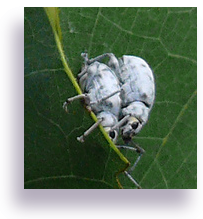 Weevils spread disease by piercing the plants and infecting them with whatever the plant they landed on last might have had. Control these as soon as you see them. Notice the weevil lifecycle above. They show you the actual size of the adult in the picture. The silvery ones pictured here are 2 to 3 times smaller than shown size. Many weevils are larger. By the way, under optimum conditions, weevils can go through their entire lifecycle in 2 to 3 weeks.
Weevils spread disease by piercing the plants and infecting them with whatever the plant they landed on last might have had. Control these as soon as you see them. Notice the weevil lifecycle above. They show you the actual size of the adult in the picture. The silvery ones pictured here are 2 to 3 times smaller than shown size. Many weevils are larger. By the way, under optimum conditions, weevils can go through their entire lifecycle in 2 to 3 weeks.
Moths that love to eat Brugmansia
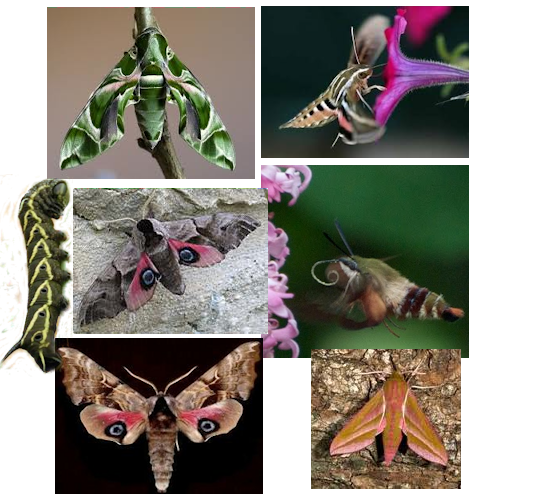
Hawkmoths also are attracted to solanaceae family plants, which include your beloved angel trumpets. Their larval worms are commonly called horn worms, because on their tail end there is a hornlike protrusion. As the worm grows, it becomes much larger, and unless your brugmansia is also very large, the hornworm can do a pretty good job of descimating it in a few days.
Because I am an avid butterfly gardener, I do not condone killing them. Just look at the few pictures of them I have gathered here for you to see. With such beauty, and an extensive brugmansia collection, the few hornworms I have can hardly hurt them. I therefore allow them to complete their lifecycle by keeping a sacrifical brugmansia available. I pick all the offenders off and put them on this brugmansia.
You can handpick them off if you need to. But if your plants can handle them, I hope you find some mercy for these mysterious and very lovely winged jewels of the night. Because Horn worms are generally a large caterpillar, picking them off by hand is easy. Just look on the leaves above the little round black droppings they leave behind. Hornworms generally choose the newer, more tender leaves to chew on.
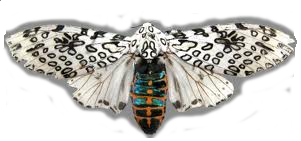 The Giant Leopard Moth also lays it's eggs on brugmansia, and the beautiful caterpillars happily munch away for a few weeks before going through metamorphasis. The adults are stunning, and if you ever see one, you will be amazed at how brightly colored the abdomen is. Electric blue and yellow or red. And the wings give it the name, with random spots dotted all over them. The adult female knowshow many caterpillars to lay on a brugmansia, so as not to starve her young. That means you should not have an infestation, rather one or two on a larger brugmansia.
The Giant Leopard Moth also lays it's eggs on brugmansia, and the beautiful caterpillars happily munch away for a few weeks before going through metamorphasis. The adults are stunning, and if you ever see one, you will be amazed at how brightly colored the abdomen is. Electric blue and yellow or red. And the wings give it the name, with random spots dotted all over them. The adult female knowshow many caterpillars to lay on a brugmansia, so as not to starve her young. That means you should not have an infestation, rather one or two on a larger brugmansia.
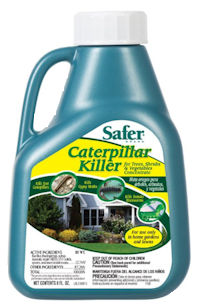 B.T. is an environmentally safe microbial killer of gypsy moth and other caterpillars known to munch on brugmansia. Properly called Bacillus thuringiensis, it is even safe to use on food crops. It comes in several forms, being a dust, spray or even the popular mosquito dunks. Since there are 11 different strains of this naturally occuring microbe, each one can be used to kill a specific pest. I cannot find the kind I like to use at my local Home Depot, but have found it online at Amazon. The Safer brand they sell at Home Depot does not seem to do as good of a job as the stuff from Amazon, even though it is made by the same company, it is specific to caterpillars. Here's more great information on B.T.
B.T. is an environmentally safe microbial killer of gypsy moth and other caterpillars known to munch on brugmansia. Properly called Bacillus thuringiensis, it is even safe to use on food crops. It comes in several forms, being a dust, spray or even the popular mosquito dunks. Since there are 11 different strains of this naturally occuring microbe, each one can be used to kill a specific pest. I cannot find the kind I like to use at my local Home Depot, but have found it online at Amazon. The Safer brand they sell at Home Depot does not seem to do as good of a job as the stuff from Amazon, even though it is made by the same company, it is specific to caterpillars. Here's more great information on B.T.
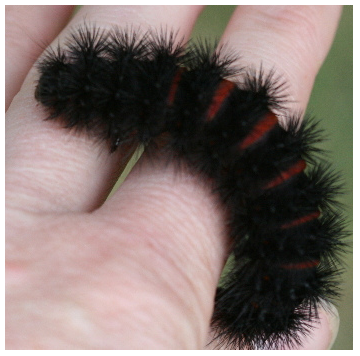 If you have a big enough plant, it is nice to let the caterpillars morph and become the fantastic adult. If not, then pick the caterpillars off. A alternate method is to plant tomatoes along with your brugmansia, and that way the small caterpillars can be transferred to the tomato plants to go ahead and finish out their life cycle.
If you have a big enough plant, it is nice to let the caterpillars morph and become the fantastic adult. If not, then pick the caterpillars off. A alternate method is to plant tomatoes along with your brugmansia, and that way the small caterpillars can be transferred to the tomato plants to go ahead and finish out their life cycle.
Fungus gnats are pesky, tiny flying insects. The adult gnats lay eggs in the soil of your brugmansia, and the larvae areworms, that live on fungus, algae, and your prized plant roots. Before they get a chance to strike, sprinkle ground cinnamon on the planter's surface. It will keep the adult fungus gnats away. There are other excellent methods of getting rid of fungus gnats. Try this organic, and helpful to the plant, method.
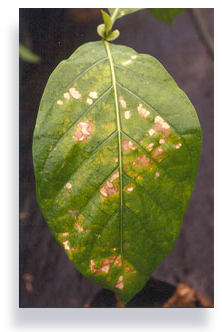 Thrips can also harm your beloved garden plants. I find they love my fruit trees and cassia, as well as my beloved brugmansia (pictured). Pirate bugs are a fantastic way to control them organically, as they are their main prey. Learn more about pirate bugs, and many other beneficial insects at Beneficial Bugs.org For more on thrips, try this link: Thrip control at NaturesControl.com
Thrips can also harm your beloved garden plants. I find they love my fruit trees and cassia, as well as my beloved brugmansia (pictured). Pirate bugs are a fantastic way to control them organically, as they are their main prey. Learn more about pirate bugs, and many other beneficial insects at Beneficial Bugs.org For more on thrips, try this link: Thrip control at NaturesControl.com
A great product that controls thrips is Spinosad. It is a natural soil actinomycete that kills the larval stage of thrips. If used as directed, it will keep them off of your plants for the entire growing season.
Beneficial Insects
Beneficial insects can certainly help you step up your game against the undesirable bugs. Refer to the page Beneficial Garden Insects to learn more about the tiny creatures that can organically wage a small war for you in the garden.
I have written another page on other various insect pests and how to control them by nonorganic (and organic) means. Read Insect Pests and how to eliminate them for further help. You can also try these other onsite links for more on brugmansia diseases and other problems. Plant mineral and nutrient deficiencies and solutions and Shrub and Tree fungal diseases.
Finally, if you need a link to a good place to order beneficials online, I have ordered several from BugLogic and had success. You can also check out GardeningZone.com for many beneficials, nematodes and other methods of organic pest control.
Tags: control insects organically, stop garden pests, insect control, organic insect control, insect pests, weevil lifecycle, weevil larvae, weevil worm, worms in flower, beneficial insects,

